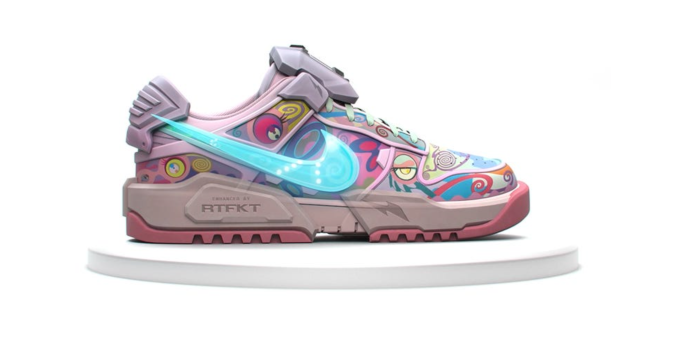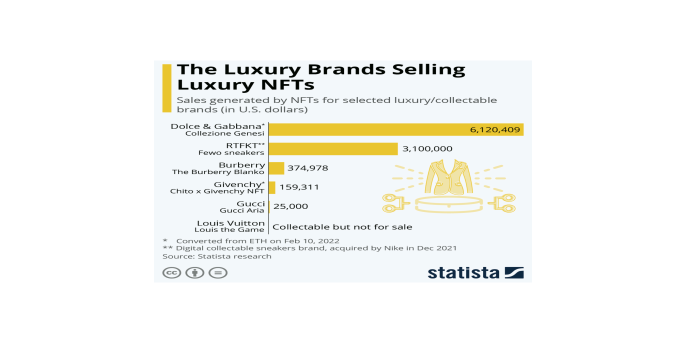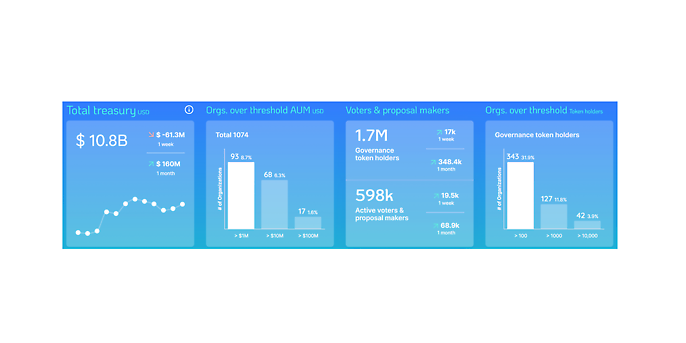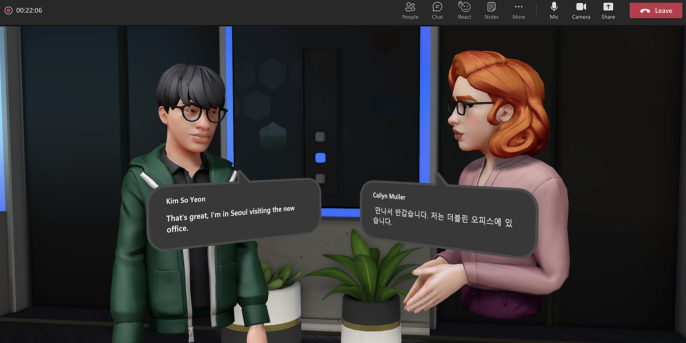1. June 2022 By Marcus Peters
Blockchain, DAOs and the metaverse – so what?
While we are still grappling with how natively applications should be woven into cloud environments, already there is new ‘disruption potential’ spawning in the far reaches of the Internet: Facebook renames itself ‘Meta’, Microsoft aligns its Teams product with the metaverse and Accenture’s ‘Technology Vision 2022’ report postulates a ‘continuum spanning the spectrums of digitally augmented worlds, realities and business models’.
Should companies truly concern themselves with this, or is it all irrelevant nonsense that is only of interest to cyberpunks? In this blog post, I shed some light on these topics, clarify important vocabulary and put these trends into the corporate context.
Web3? How come I’ve never heard of web1 and web2?
A uniform definition does not yet exist. Mostly, web3 refers to the evolution of the Internet as we know it today – with a focus on ‘user-generated content’ – to the ‘Internet of value’. Web1 is considered a version of the functionality of the Internet at around the time of the dot-com boom in the 2000s. Web2 represents the Internet as we know it today. Besides great features, the catchphrase ‘you are the product’ is, unfortunately, an apt description of the present state. First and foremost, because Internet giants earn a lot of money with the users’ data.
Web3 is also referred to as the ‘token economy’, that is, a decentralised peer-to-peer version of the Internet in which blockchains manage the respective status of transactions distributed across the entire network. Unlike web2, where a platform usually has comprehensive control over the data provided by the users, in web3 this control is intended to remain with the users. The following excerpt from Instagram’s terms of use exemplifies the state of affairs. By agreeing to it, users grant the company far-reaching rights of use of the transferred content.
…’When you share, post or upload content that is covered by intellectual property rights (like photos or videos) on or in connection with our Service, you hereby grant to us a non-exclusive, royalty-free, transferable, sub-licensable, worldwide license to host, use, distribute, modify, run, copy, publicly perform or display, translate and create derivative works of your content (consistent with your privacy and application settings).’…
Instagram Terms of Use, “Permissions You Give to Us”
Blockchain – isn’t that Bitcoin?
Yes and no! In general, blockchain is a data structure that uses cryptographic algorithms to ensure the integrity of this very same data structure. Data is represented in blocks, and each block is linked to its predecessor.
Multiple layers in blockchain technology help to create a distributed ledger that archives decentralised architectures. Like the OSI model, these layers fulfil important requirements and abstract the layer below from the layer above. Transactions change the state of the blockchain and are achieved based on a consensus mechanism.
Blockchains are among the fundamental building blocks of the web3 space. The first prominent use case came about in 2009, when Bitcoin was introduced to build a decentralised monetary system. Another important evolution that followed was the Ethereum Chain, and with it the introduction of smart contracts. These enable Turing-complete programmability and thus offer vast possibilities. They are the building blocks of monetary systems, financial products, the trending NFTs, Decentralised Finance (DeFi), DAOs and other use cases.
Fungible or non-fungible? NFT!
In the cryptoscene, the term ‘overpriced JPEGs’ is often used in connection with NFTs. This is to underscore the sad fact that, in many cases, NFTs are nothing but hype.
On closer inspection, however, the concept is quite interesting and serves as an important component for making web3 possible. We also know non-fungible tokens from the physical world. While you can exchange a euro coin for any other euro coin of the same denomination, a gym membership card, on the other hand, cannot be exchanged for another member’s card. In addition to the membership card – which proves my identity, grants me access and, possibly, encourages the vending machine to serve me drinks – there are many more examples for non-exchangeable tokens, such as personalised tickets, travel tickets, certificates or cadastral information on property ownership.
And this is exactly where the potential of NFTs comes into play. The mapping of the aforementioned use case classes with the help of cryptotechnologies and the accompanying ‘tokenisation’ will represent a major market in the future. It ranges from the tokenisation of property and goods to virtual objects in games and the metaverse. The following image illustrates this based on the example of an NFT sneaker from Nike.

NFT sneaker from Nike, source: https://www.cnet.com/personal-finance/crypto/these-nike-nft-cryptokicks-sneakers-sold-for-130k/
Other brands are also pushing into this market and are experimenting with this medium. In the retail business, knowledge about the customer is a key metric, as it allows the retailer to tailor offers to the needs of the customer with great precision. With NFTs, the right marketing combined with appropriate software provides the foundation for creating powerful customer loyalty programmes.
As can be seen below, in addition to highly visible brands such as Nike, Coca Cola, McDonald’s and so on, some luxury brands have also started to target this market.

Luxury brands in the NFT market, source: https://www.statista.com/chart/26869/luxury-fashion-nfts/
As indicated above, the property business is also a choice candidate for NFT-based solutions. Professionals in the investment business such as EY and Nasdaq have recognised this, as can be seen in many publications, blogs and in conversations with clients. For EY, tokenisation is a key topic in the property industry, and the Nasdaq service platform also offers relevant services.
‘Tokenisation of property assets is a key issue in the property industry. Hardly any other topic is currently being discussed as intensively as the blockchain-based technology of ‘tokenisation”.’
(CF. EY BLOG [5])
A blog post by Nasdaq, for example, discusses how the efficiency of the initial investment process and the ongoing management and administration of property portfolios must be improved in order to make the property market accessible to a broader investor base. And this is exactly where the technologies mentioned above offer great potential.
The modern workplace is so ‘yesterday’ – DAOs are the future
DAO stands for ‘decentralised autonomous organisation’ and essentially refers to a socio-technological system based on web3 technologies. In principle, it’s an evolution of the open-source movement that can build enterprise-like structures using blockchain technologies. Smart contracts are used to implement the following core components used by DAOs to ensure its operation:
- Governance models to ensure the distribution of influence through coordination mechanisms
- Tokens representing values such as benefits, voting rights and currency
- A treasury mechanism to execute economic processes in the DAO
Decentralisation and community leadership are the core principles of a DAO. Decisions are made by token holders via voting.
Can this actually work? There is no clear answer yet, given that the entire web3 scene is still in an experimental stage. However, many investors are betting on the idea of DAOs. In his article ‘How DAOs Could Change the Way We Work’, Andreesen Horowitz even postulated the end of traditional corporate structures.

Insights into the world of DAOs, source: deepdao.io
The total capital of the top 200 DAOs is around USD 10 billion, making it abundantly clear that this is about real business models.
Let’s take Uniswap, for example, a DAO that operates very successfully as a decentralised marketplace for the exchange of cryptocurrencies. The trading volume in April 2022 alone was around USD 35 billion, which underscores just how established this DAO is.
A DAO is usually made up of highly motivated, well-trained people who are committed to the DAO vision and want to break out of conventional work environments. Its decentralised nature gives the DAO the advantage of being able to operate in a distributed and highly agile manner. Harvard Business Review has listed important points that DAOs occupy and suggests that they might change the way we work. Thanks to the decision-making and incentivisation mechanisms outlined above, DAO members have more autonomy over where, when and how they work. Contributors are also much more involved in and able to influence decision-making than is possible in a traditional company. DAOs can give people more freedom to choose projects whose mission and vision truly align with their own values.
And it is precisely these values that millennials and Gen Z look at when choosing an employer.
Metaverse – the ‘everywhere Internet’
An apt definition of the metaverse comes from the financial information service ‘Investopedia’, which stresses the expansion of virtual interaction as we know it today to include augmented and virtual reality and cryptocurrencies.
‘The metaverse is a digital reality that combines aspects of social media, online gaming, augmented reality (AR), virtual reality (VR), and cryptocurrencies to allow users to interact virtually.’
Source: Investopedia
It is important to note that there is no such thing as ‘the metaverse’, but rather many different subsets of the above-mentioned definition that are being realised or developed by different actors. In addition, there have already been implementations of metaverse-like environments in the past, such as Second Life, World of Warcraft or, most recently, Fortnite.
The company Meta (formally Facebook) is currently trying to bring the metaverse to social media platforms. The company plans to invest around USD 10 billion in activities and products related to the metaverse. While it is doubtful whether the group will be able to realign its tarnished position of trust in the new era of the Internet, its marketing and advertising machine has been quite successful to date and has already created a gigantic ecosystem. It is therefore to be expected that the company will develop its ‘Meta Business Suite’, which still focuses on web2 platforms such as Facebook and Instagram, into corresponding offerings for business customers in the metaverse.
Other market participants are also preparing for the future. For example, McDonald’s has registered ten patents aimed at offering virtual food and beverage products, as well as downloadable multimedia files containing artwork, text, audio, video and non-fungible tokens. McDonald’s also wants to offer online retail services that involve virtual goods. In addition, it will be possible in future to place orders in a virtual shop for home delivery in the physical world. This makes it clear that the metaverse could play a major role for the retail industry: what do you think will happen when my metaverse avatar visits a virtual McDonald’s store wearing cool Nike trainers and places an order there?
Microsoft has also made its interest in gaming-related metaverse scenarios quite clear by investing around USD 69 billion in gaming heavyweight Activision Blizzard. The company is gearing up to shape future developments in this market and exploit them economically. The elements described above open up various possibilities for creating entire ecosystems. Get ready for trading items from games such as clothing, equipment, weapons and other artefacts while ordering food and other goods into the physical world.
For businesses, Microsoft is a well-known provider of collaboration tools (M365), among other things. And here, too, things are headed in the direction of the metaverse.
Microsoft presented a solution for remote work in November, which is now poised to enter the market in 2022: Mesh for Microsoft Teams. The feature combines mixed reality capabilities with Microsoft Teams productivity tools, allowing people to participate in virtual meetings, send chats, collaborate on shared documents and more.

Meeting in the metaverse, source: Microsoft.com
In the example metaverse meeting shown, the conversation taking place is being translated in real time into the respective language of the participants. Here, further developments for the digital workplace can be expected in the future in order to make the typical touchpoints with the company even more palpable for employees in the virtual world.
Relevant or not? A bird’s eye view
If you consider the hesitancy of German companies to embrace digitalisation or the cloud, you might come to the conclusion that Germans are not at the forefront of these topics. For many decision-makers, these topics are a priority, but according to Statista, Germany is ‘only slightly above the EU average and achieves only a relatively weak score in corporate digitalisation. As a consequence, less than one third of enterprises (29 per cent) exchange information electronically and only 18 per cent of small and medium-sized enterprises issue electronic invoices.’
And if you look at the proportion of global Fortune 500 companies that come from Germany, it is once again time to take the topic of ‘innovation’ more seriously and position yourself as a company.

Number of Fortune 500 companies in selected countries worldwide from 2000 to 2021, source: Statista, ‘Number of Fortune 500 companies in selected countries worldwide from 2000 to 2021’, https://www.statista.com/statistics/1204099/number-fortune-500-companies-worldwide-country/
The technologies that will shape the future of the Internet are no witchcraft; instead, they are just the next step in the digital transformation. However, this change is already happening, so companies would do well to align their digital agenda with the opportunities web3 holds.
The facets of web3 discussed in this article – blockchain, DAOs and the metaverse – show that markets already exist there today and that major market players are already positioning themselves accordingly.
You will find more exciting blog posts from the adesso world in our latest blog posts.
Would you like to learn more about our services for Microsoft technologies? Then check out our website.

